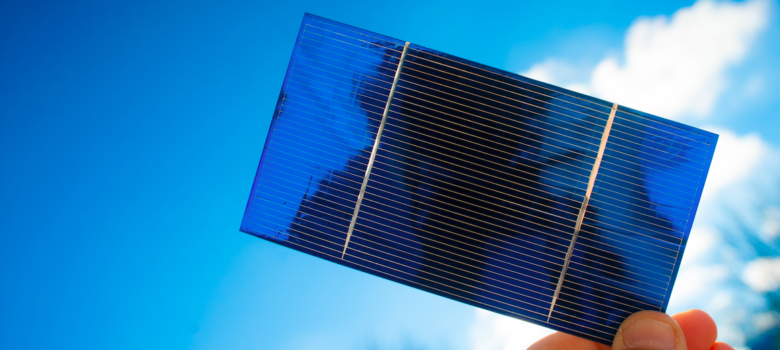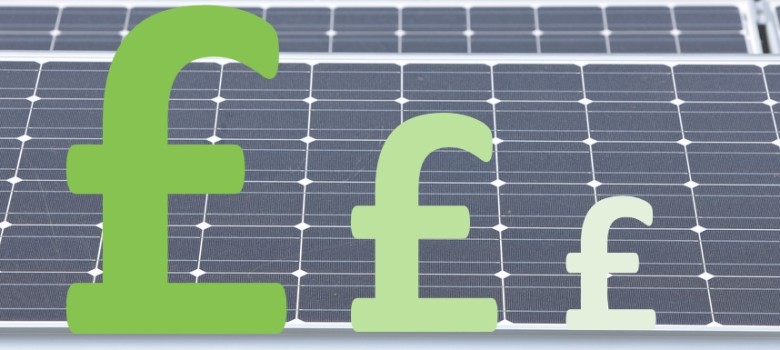
Perovskite is a photovoltaic crystalline material used in solar PV panels. Its crystals are thinner, more flexible and easier to manufacture than silicon crystals. It is already revolutionising solar technology and is one of the most promising developments in the whole of the renewables industry.
What is perovskite?
Perovskite is a unique combination formed of a number of different elements, including carbon, hydrogen, lead and a halogen such as chlorine in a three-dimensional crystal lattice.
Perovskite semiconductors are high efficiency and low-cost.
Efficiency of perovskite
Perovskite solar cells currently have a very high reported efficiency of 20.3%. Other solar panel models have an efficiency of between 15-22%. With further development, this is expected to rise even further.
Manufacturing perovskite
Melting silicon dioxide in a furnace to make traditional panels requires temps of 1500 – 2000 degrees celsius, and releases carbon dioxide emissions in the process of separating oxygen molecules from silicon. Silicon panels also comprise of a number of expensive materials. Perovskite is made from two readily-available salts and doesn’t require high-temperature processing. This makes perovskite’s production methods more environmentally-friendly than those of other solar panels, and also cheaper.
Perovskite cells are highly flexible. They are normally printed onto glass panels, (which is useful for applications such as building-integrated photovoltaics), but could also be printed onto plastic. This would make them cheaper to mass-produce.
The downsides of perovskite solar
This technology is developing at a huge pace, but it does have problems. A major limitation is that the solar cells are tiny. A method needs to be found for maintaining efficiency while increasing surface area.
Something else which requires a solution is the sensitivity of the panels. Early examples were found to degrade in high temperatures, wet conditions, or -ironically – through prolonged sun exposure.
One way scientists hope to maximise efficiency is by producing all-perovskite solar cells, rather than the hybrids currently available. Until now, perovskite has commonly been coated on as a layer over traditional silicon solar panels to increase their efficiency. Now, the race is on to find the best way to use the cells as a standalone technology.
Tandem perovskite solar cells
Tandem cells – already used in existing solar technology – could be the answer. Tandem cells consist of of two or more sub-cells stacked on top of each other. Until now, these have been made from different materials. Perovskite developers are now experimenting with all-perovskite tandem cells. The idea is that these cells would work together to increase overall cell efficiency.
A typical perovskite solar cell
High energy photons make electrons in the crystal jump across an ‘energy gap’, creating an electrical current.
A tandem perovskite solar cell
Effectively, two cells would be ideally matched so as to offset each other’s flaws.
- Cell 1: Large energy gap. Cell generates higher voltage, but lower-energy photons pass through it.
- Cell 2: Small energy gap. Cell produces a very low voltage, but can absorb most photons.
These two cells would be specially developed and layered on top of each other to work together for maximum efficiency.
What is next for perovskite solar cells?
Once more research has been done into fixing the problems of perovskite, and into producing tandem perovskite cells, the future looks bright for this technology.

Proponents expect it to eventually cut the cost of solar energy by three quarters. Scientists are confident that its efficiency will eventually rise to at least 30%.
Perovskite is the fastest-growing solar technology, and we can expect to hear more about it in the next few years. Its efficiency has doubled in just 2 years and should continue to do so with refinement.
Benefits
- Potentially more efficient than other types of solar panel.
- Cheap to produce.
- The manufacturing process is low-emission.
- Highly flexible, and suitable for a range of applications.
Limitations
- No-one knows what their performance will be long-term or how exactly they will be affected by weather over time.
- Lead – which is highly toxic – is present in the manufacturing process. These could potentially be swapped out, but so scientists have so far failed to find an alternative that is equally efficient.
- The surface area of perovskite solar cells is tiny.
Think we missed something? Do you have a different opinion?
Comment below to get your voice heard…













No Comments yet! Be the first one.